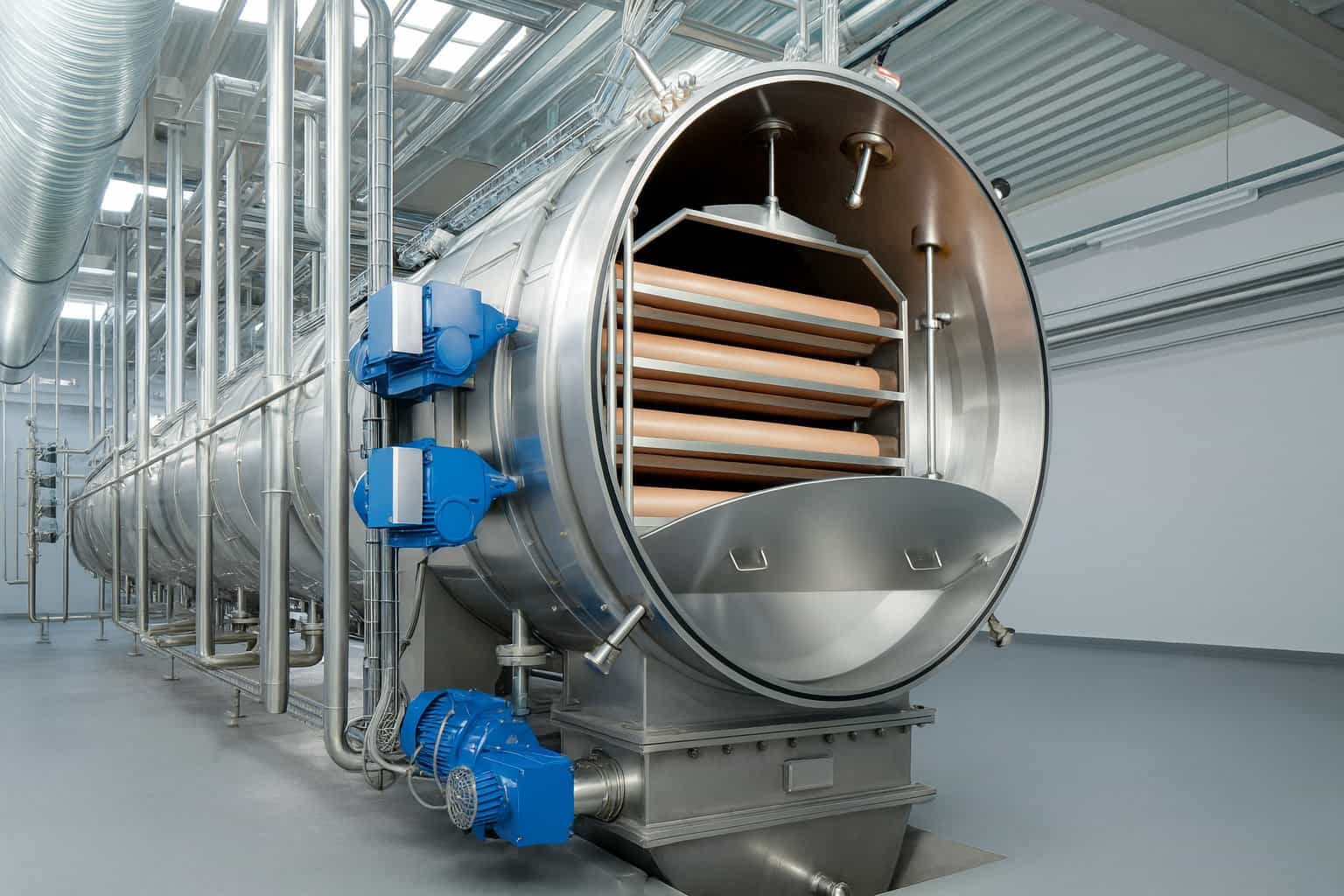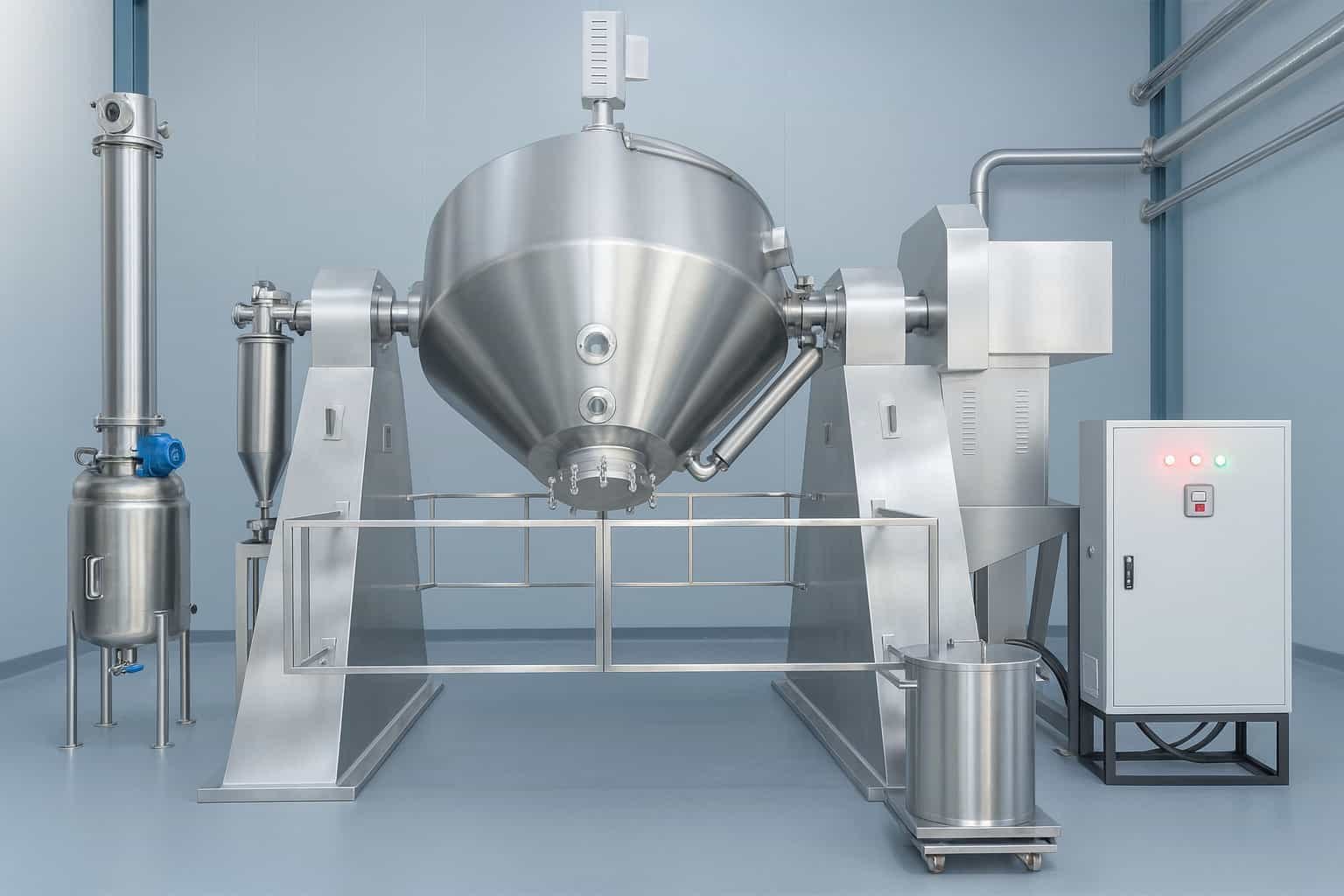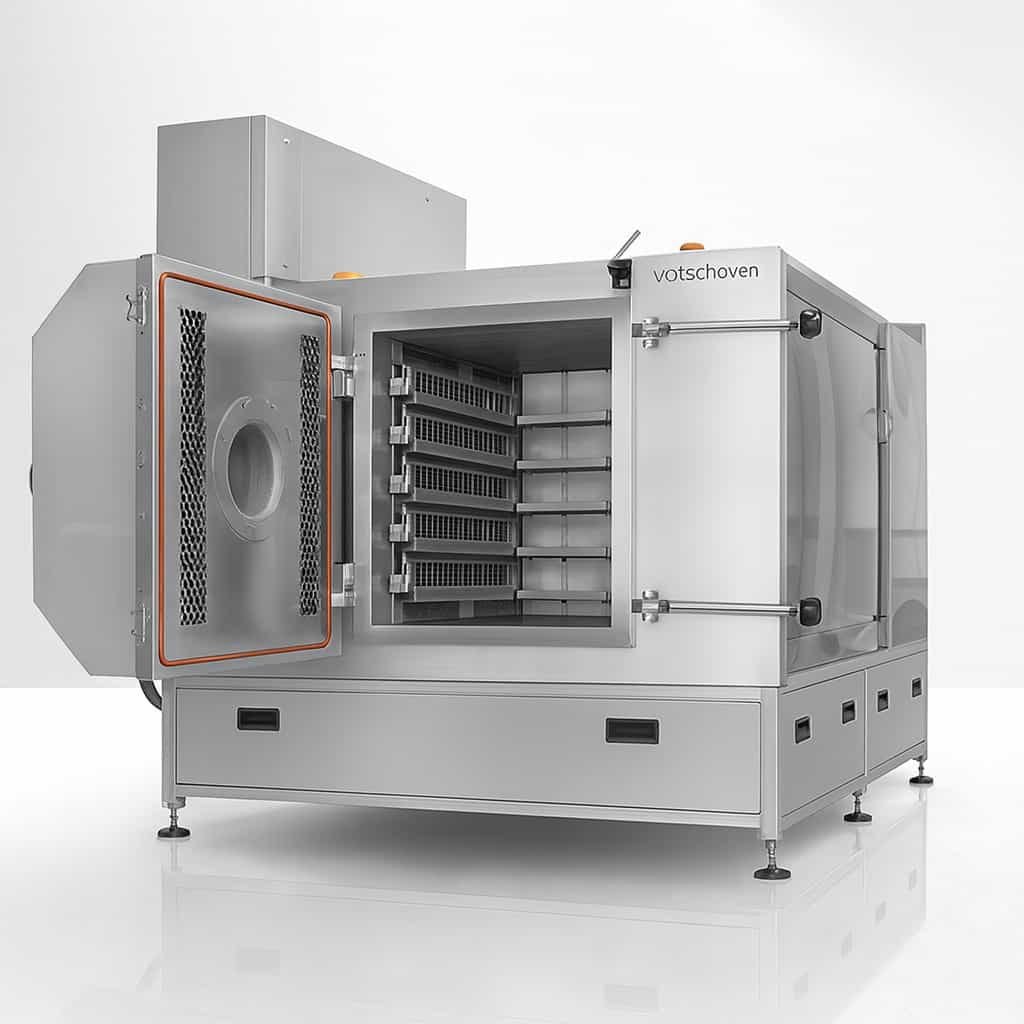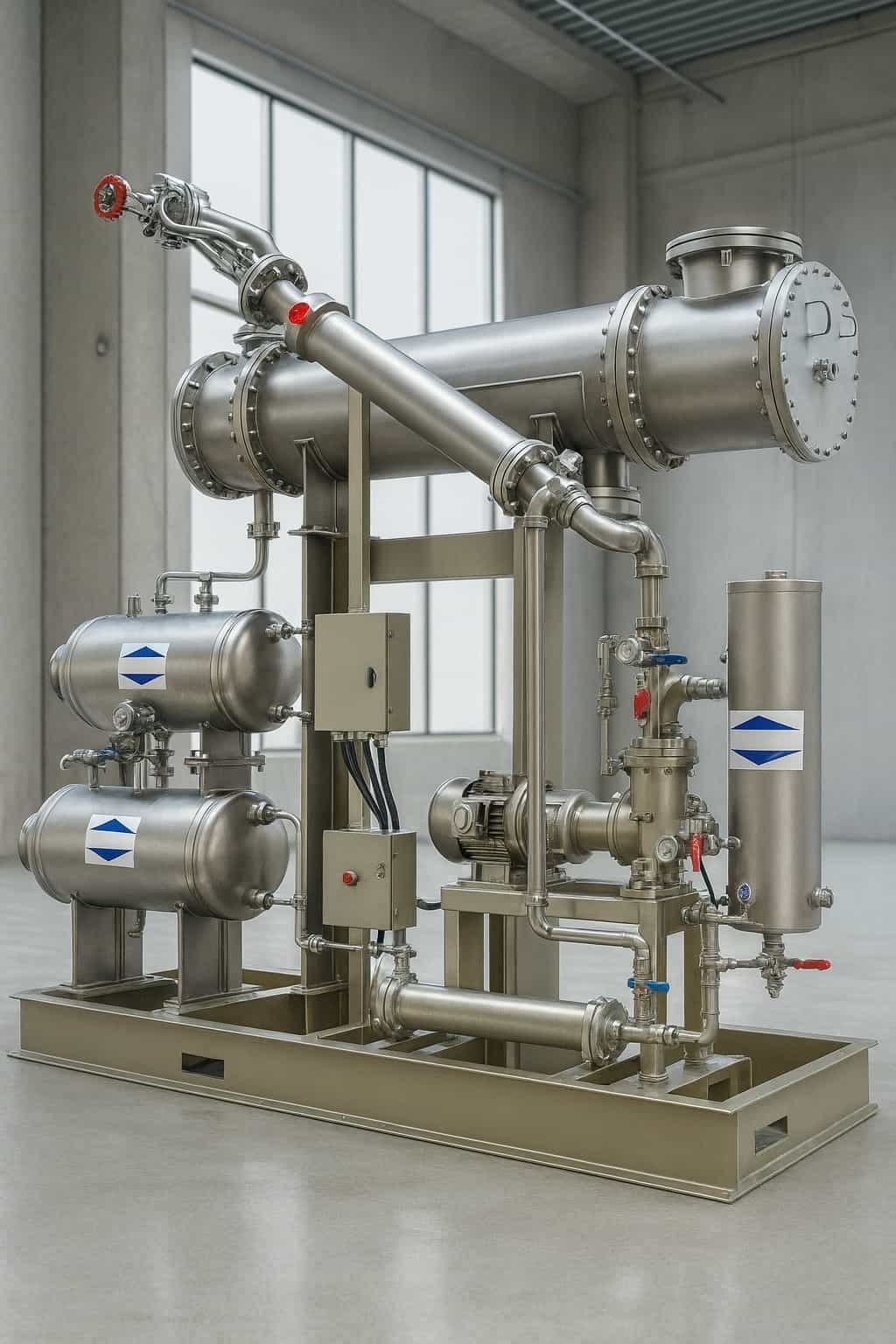A vacuum dryer takes water out of materials by using low pressure. This dryer is good for things that cannot take high heat or air. Many industries use a vacuum dryer to keep powders, pastes, and chemicals safe. The process keeps the temperature low, so the product stays good. People pick this way when they want gentle but strong drying.
Key Takeaways
Vacuum dryers take out water by making the air pressure lower. This lets things dry at cooler temperatures. It helps keep delicate materials safe.
This way of drying is good for foods, medicines, and chemicals. These things can get ruined by heat or air.
Important things like pressure, temperature, and how thick the product is can change how fast and well it dries.
Vacuum drying uses less energy. It keeps products safe and lowers the chance of germs because it is a closed system.
Picking the best vacuum dryer depends on what you are drying. It also depends on how you need to dry it and what the machine can do.
What Are the Basics of a Vacuum Dryer?
A vacuum dryer removes moisture from materials using low pressure, which lowers the boiling point of water, enabling drying at lower temperatures. This method is efficient for heat-sensitive materials.
What Is a Vacuum Dryer
A vacuum dryer is a machine that dries things by lowering air pressure inside a closed space. This is called vacuum drying. The main reason to use it is to dry things at lower temperatures. This helps keep sensitive materials safe from heat. Many companies use vacuum dryers for powders, pastes, and other gentle items. These items might get ruined with normal drying.
A vacuum dryer has some main parts:
A closed chamber holds the material.
Heating plates or shelves give gentle heat.
Trays or shelves hold the product during drying.
A vacuum pump takes out air and lowers pressure.
A condenser collects water vapor.
Temperature controls and gauges help watch and change the process.
Tip: Vacuum drying is good for products that cannot take high heat or air. This is why it is used for food, pharmaceuticals, and chemicals.
How It Works
Vacuum drying is simple but works well. The vacuum pump takes out air from the chamber. This makes the pressure go down. When pressure is lower, water boils at a lower temperature. So, moisture can leave at cooler temperatures. The heating plates or shelves warm the material gently. This helps water turn into vapor.
The vapor leaves the product and goes to the condenser. There, it cools and turns back into liquid. The vacuum pump keeps pulling out air and vapor. This keeps the drying going smoothly. This way, drying is faster and the material does not get too hot.
Moisture leaves faster, even when it is not very hot.
Drying takes less time and keeps the product good.
Vacuum drying gives more control than normal drying. This helps keep sensitive things safe.
There are different kinds of vacuum dryers, like tray dryers, rotary dryers, and fluid bed dryers. Each kind is best for certain things and drying jobs. Vacuum drying is a good way to dry products that need special care.
How Does the Vacuum Drying Process Work?
The vacuum drying process removes moisture from materials by lowering the pressure in a sealed chamber, allowing water to evaporate at lower temperatures. This method preserves the material’s quality and reduces drying time.

Principle of Vacuum Drying
Vacuum drying uses science to dry things gently. The vacuum pump lowers the pressure inside the chamber. Water boils at a lower temperature when pressure is low. This means products do not need high heat to dry. Sensitive items stay safe from damage. Lower pressure helps push water out of the material. This push is called the driving force for moisture removal. The difference in vapor pressure makes water move out faster. Drying happens quicker and is safer for delicate products.
The main idea is easy to understand. Lower pressure makes water boil at a lower point. This lets products dry at only 30°C. Many food and pharmaceutical companies use this method. It keeps colors bright and nutrients safe. The process also stops oxidation, which can spoil products.
Note: Vacuum drying is best for things that cannot take heat or air. It keeps quality high and drying times short.
Key Variables
Some important things affect the vacuum drying process. Each one can change how well drying works:
Pressure Level: Lower pressure makes drying faster. It also lowers water’s boiling point.
Temperature: The process uses gentle heat, usually below 75°C. This keeps sensitive products safe.
Surface Area: More surface area means faster drying. Spreading out the product helps a lot.
Product Thickness: Thicker items take longer to dry. Thin layers dry much faster.
Vacuum Pump Strength: A strong pump keeps pressure low. This helps the drying process stay steady.
The right mix of these things helps remove moisture quickly and safely. Operators watch these factors to get the best results from vacuum drying.
What Are the Applications of Vacuum Drying?
Vacuum drying is utilized primarily in pharmaceuticals, food preservation, and chemical industries due to its efficiency in removing moisture at lower temperatures, thus preserving the quality of sensitive materials.

Industries Using Vacuum Dryers
Many industries use vacuum drying to keep products safe. The food industry uses it to keep food fresh and safe. Companies dry fruits, vegetables, and spices to keep their color and taste. The pharmaceutical industry uses vacuum drying to keep medicines pure. This process helps dry powders and proteins too. Chemical companies use vacuum drying for chemicals that react with air or heat. Farmers use vacuum drying for seeds and grains.
Vacuum drying helps keep products safe from heat and air. It works well for things that lose quality with normal drying.
A table below shows some main industries and how they use vacuum drying:
Industry | Example Uses |
|---|---|
Food | Drying fruits, vegetables, spices |
Pharmaceutical | Drying medicines, proteins, powders |
Chemical | Drying chemicals, catalysts |
Agriculture | Drying seeds, grains |
Suitable Materials
Vacuum drying is best for some special materials. Foods like fruits, herbs, and dairy powders need gentle drying. These foods can lose color or nutrients if heated too much. The pharmaceutical industry dries powders, granules, and pastes. Many medicines and vaccines need careful drying. Vacuum drying is also good for hygroscopic substances. These materials take in water from the air and can spoil if not dried right.
Foods that spoil fast do better with vacuum drying. The process also helps dry proteins that break down with heat. The pharmaceutical industry uses vacuum drying for products that must stay pure. Powders, pastes, and granules dry well with this method.
Vacuum drying keeps food and medicine safe from damage. It helps keep quality high and meets safety rules.
What Are the Advantages and Disadvantages of a Vacuum Dryer?
A vacuum dryer offers rapid drying at low temperatures, which preserves heat-sensitive materials effectively. However, it requires significant investment and maintenance.

Main Benefits
Vacuum drying has many good points for food, chemical, and pharmaceutical companies. Many businesses use it to keep delicate products safe and save energy.
Vacuum drying uses low heat, so fragile things do not get ruined. This is very helpful for pharmaceutical powders and proteins.
The process can take out even tightly held water. This is important for making pharmaceuticals, catalysts, and polymers. It helps make a better product.
The closed chamber stops air from getting in. This keeps out things that could spoil or dirty the product. Sensitive ingredients stay safe.
The simple design means there is less chance of mixing products by mistake. Fewer moving parts help stop cross-contamination.
Vacuum dryers let you remove all the solids. This means less product is wasted, so you get more out of each batch.
The process saves energy because water boils at a lower temperature. Drying at lower heat uses less power.
Double-wall heating jackets and insulation keep heat inside. This makes drying faster and saves even more energy.
Vacuum dryers do not need much fixing. One vacuum seal helps stop leaks and saves energy over time.
Vacuum drying helps food and medicine keep their nutrients and smell. Lower heat keeps antioxidants, flavonoids, and other healthy parts safe. Products keep their taste and health benefits.
Main Drawbacks
Vacuum dryers also have some problems to think about.
The highest temperature is about 315°C (600°F). Some other dryers can get hotter.
Heating is slower because heat moves through surfaces, not by blowing hot air.
Most vacuum dryers work in batches. If you want to dry things all the time, you need extra machines.
These things can make drying slower and limit how hot you can get for some jobs.
Aspect | Vacuum Dryer | Desiccant Dryer |
|---|---|---|
Higher due to advanced technology | Lower initial purchase cost | |
Energy Efficiency | Higher, operates at lower temperatures reducing energy use | Lower, energy-intensive desiccant regeneration |
Maintenance | Specialized but less frequent | Regular desiccant replacement required |
Environmental Impact | Lower emissions and less waste | Higher energy consumption and material waste |
Vacuum drying costs more at first. But it can save money later because it uses less energy and needs less fixing.
What Types of Vacuum Drying Equipment Are Available?
Several types of vacuum drying equipment are available, including tray dryers, rotary dryers, and freeze dryers, each serving specific industrial needs.

Types of Vacuum Dryers
Vacuum drying machines come in different shapes and sizes. Each type is made for a special job. The table below lists some common types, their main features, and what they are used for:
Vacuum Dryer Type | Key Design Features | Typical Applications |
|---|---|---|
Nauta Conical Vacuum Dryer | Conical shape, gentle mixing, easy to clean | Pharmaceuticals, chemicals, food powders, lab batches |
Bench Top Ball Mill Vacuum Dryer | Combines grinding and drying, compact, precise | Laboratory small batches needing speed and accuracy |
Industrial Vacuum Dryer | Robust, handles large volumes, fits production lines | Large-scale manufacturing |
Vacuum Spray Freeze Dryer | Mixes spray and freeze drying, preserves active ingredients | Pharmaceuticals, food, nutraceuticals |
Vacuum Ribbon Dryer | Helical ribbons for mixing and drying, even heat | Pharmaceuticals, chemicals, labs, and production |
Each machine is best for certain materials and jobs. For example, the Nauta Conical Vacuum Dryer is good for powders that need gentle care. The Vacuum Spray Freeze Dryer keeps sensitive ingredients safe.
Choosing the Right Equipment
Picking the right vacuum dryer depends on a few things. Beginners should think about these tips:
Choose a chamber that is about 1.5 times bigger than your sample.
Check the temperature range. Lab ovens can go up to 250°C, but big machines may need more.
Match the vacuum level to what you are drying. Some things need a strong vacuum, others do not.
Make sure heat spreads evenly for good drying.
Check if the dryer is safe for your material, especially if it is sensitive or dangerous.
Make sure the power supply fits. Big dryers may need more electricity.
Look for helpful features like automatic checks and quick recovery.
Think about your budget and what you need the dryer to do.
Lab dryers are made for small, careful jobs. Big dryers are for large amounts and may have extra safety features.
Comparison with Other Dryers
Vacuum dryers are different from other dryers in many ways. The table below shows how they compare:
Dryer Type | Design Features | Operation Principles |
|---|---|---|
Tray Dryer | Stacked trays, heated air circulated by blowers | Heated air passes over trays; moisture removed by ventilation; temperature and air speed controlled |
Inclined drum, rotates slowly, internal flights | Material lifted and cascaded; hot air flows through drum; drying by tumbling and hot air contact | |
Vacuum Dryer | Sealed chamber, vacuum system, indirect heating | Reduced pressure lowers boiling point; heat supplied indirectly; vapor removed by vacuum and condensed |
Vacuum dryers use less energy because they dry at lower heat. This helps protect delicate products and saves power. Other dryers might use more energy and can harm sensitive items. Vacuum dryers also give better control, so they are great for things that need gentle care.
Vacuum dryers take out water in a gentle way. This makes them good for products that are easy to damage. Food, medicine, and chemical companies use them a lot. Some people think vacuum dryers pull water out. But they really lower the pressure so water leaves at cooler temperatures. These dryers save energy and keep products safe. They also let you control the drying better. But they work in batches and heat up slowly, which can be a problem for some jobs.
If you are buying your first vacuum dryer, experts have tips. You should check how fast it removes air, how well the condenser works, and what kind of vacuum pump it uses. The table below gives more advice:
Practical Advice Aspect | Explanation |
|---|---|
Key Considerations | Look at drying time, how well the condenser works, size, risk of solids moving, and vapor type |
Vacuum Pump Selection Criteria | Pick a pump that fits the pressure and vapor needs |
Practical Buying Tip | Ask experts for help to find the best dryer |
New users can get help from groups like the National Center for Home Food Preservation and Create Better Health. New technology like AI, automation, and energy-saving tools make vacuum dryers work better and help more people use them.
FAQ
What is the difference between a vacuum dryer and a vacuum desiccator?
A vacuum dryer takes out water using heat and low pressure. A vacuum desiccator keeps samples dry in low pressure but does not use heat. Scientists use vacuum desiccators to store samples after they are dried.
Can vacuum dryers handle all types of materials?
Vacuum dryers are best for things that are sensitive to heat or air. They do not work well for things that need very high heat or must dry all the time. People should check what their material needs before picking this method.
How does vacuum degassing relate to vacuum drying?
Vacuum degassing takes out air or gas from liquids or solids by lowering pressure. In vacuum drying, vacuum degassing helps water leave the material faster.
Are vacuum dryers safe to use with food products?
Vacuum dryers are safe for drying food. They use low heat and stop oxidation. This helps food keep its nutrients, color, and taste.
What maintenance do vacuum dryers need?
People should check seals, clean the chamber, and look at the vacuum pump often. Good care helps the dryer last longer and work better.

